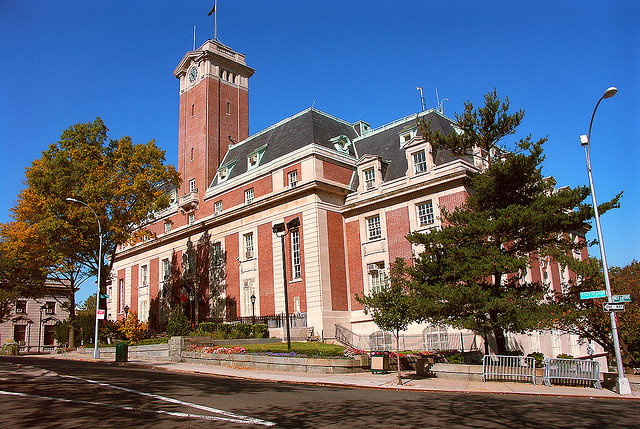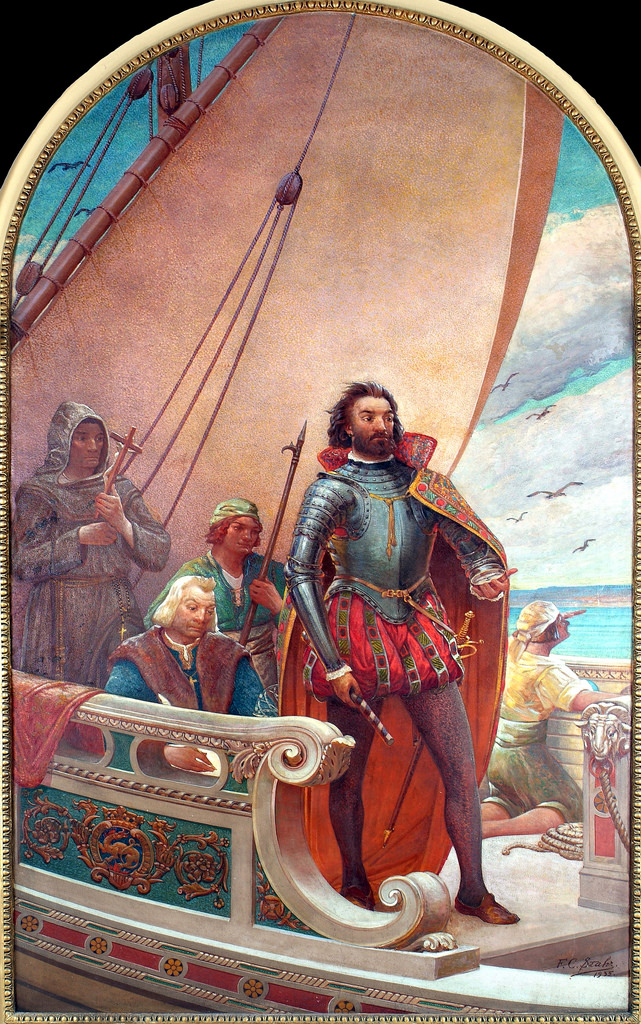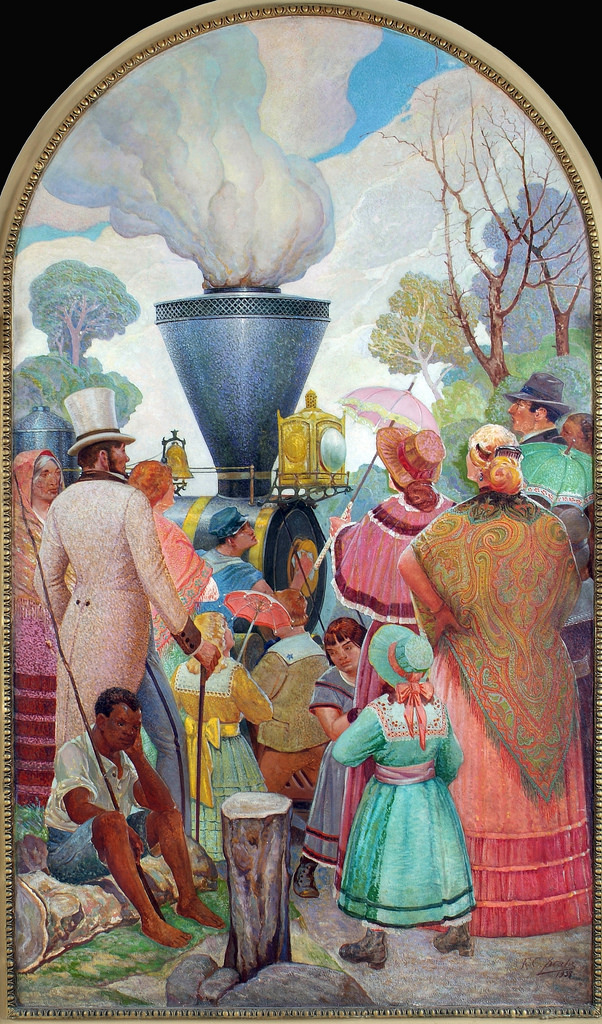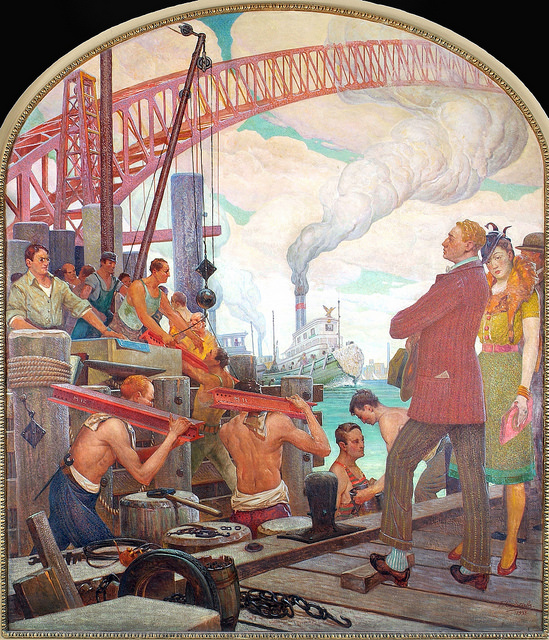 Staten Island’s civic center, Borough Hall | Tobias via Flickr
Staten Island’s civic center, Borough Hall | Tobias via Flickr
The end of the 19th century was a time of great transition for Staten Island. In 1898, the borough was consolidated and incorporated into New York City and a new location, St. George, was selected as the civic center of Staten Island. With that a new municipal building was needed. Local architects Carrère and Hastings were selected. Best known for their work on the main branch of the New York Public Library at 42nd Street, the architects had a significant impact on the urban design of New York.
In 1904, during the construction of the new civic center – Borough Hall, a French Renaissance brick and limestone building — Staten Island native, painter and educator, Frederick Charles Stahr, pitched an idea to the architects. He wanted to paint a series of murals depicting the history of Staten Island. He was promised the commission but the money to produce the work never materialized. It took another 32 years for the murals to come to fruition, after Stahr received a grant from the Works Progress Administration (WPA). Formed by President Franklin D. Roosevelt, the WPA carried out countless public work projects, and employed millions.
 Giovanni da Verrazzano discovers Staten Island, 1524 | Frederick Charles Stahr
Giovanni da Verrazzano discovers Staten Island, 1524 | Frederick Charles Stahr
The 13 murals are 6 ½ x 13–foot oil-on-canvas masterpieces, each of which depicts a significant moment in Staten Island’s past. Events depicted include Giovanni da Verrazzano “discovering” Staten Island in 1524, Henry Hudson anchoring off the island in 1609, the first railroad running from Clifton to Tottenville in 1860, and the construction of the Bayonne Bridge, begun in 1928. Stahr completed his grand vision in two years. He was sixty-four years old.

Henry Hudson anchors off “Staaten Eylandt,” 1609 | Frederick Charles Stahr
Recently another set of WPA murals depicting life on Staten Island were in need of a new home. The work was originally commissioned by the WPA for the Farm Colony, a poorhouse in Staten Island that became the Seaview Hospital tuberculosis sanatorium and later the Sea View Farms nursing home. These murals, by artists Axel Horn and Charles Davis, were created under the theme “Americans at Work,” and pay homage to workers and their accomplishments. The murals had been taken down and spent years in a warehouse, but through the work of several passionate people the murals have recently been installed in the county Supreme Court in St. George, just steps away from the murals in Borough Hall.

Bayonne Bridge under construction, 1928-1931 | Frederick Charles Stahr
Next time you’re in the St. George area, doing your civic duty or just sightseeing, be sure to stop in and take a peek at this collection. It shines a light on Staten Island’s remarkable history and offers a glimpse at the little known story of the development of this fascinating borough.
Businesses Mentioned Above
[blankslate_pages id=”d53a07e55aa943″ type=”card” show_photo=”true” utm_content=””][/blankslate_pages]

